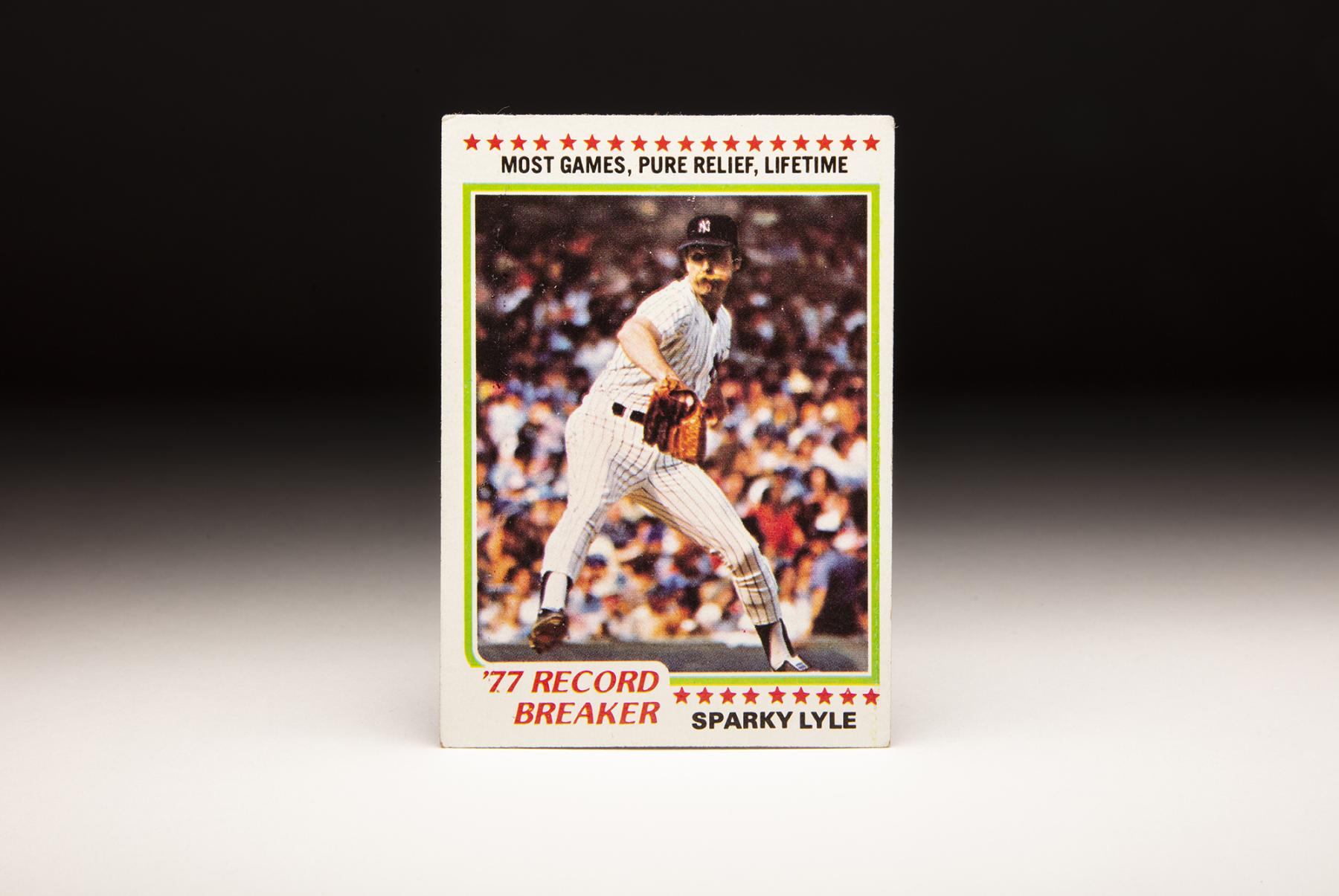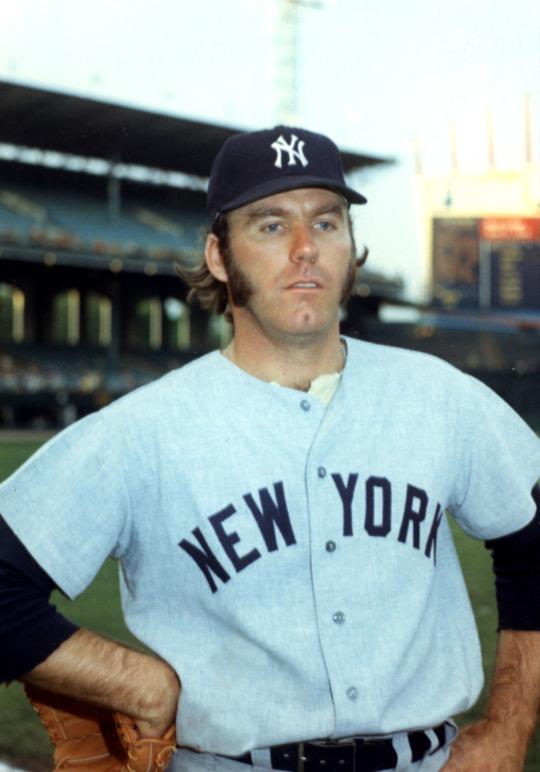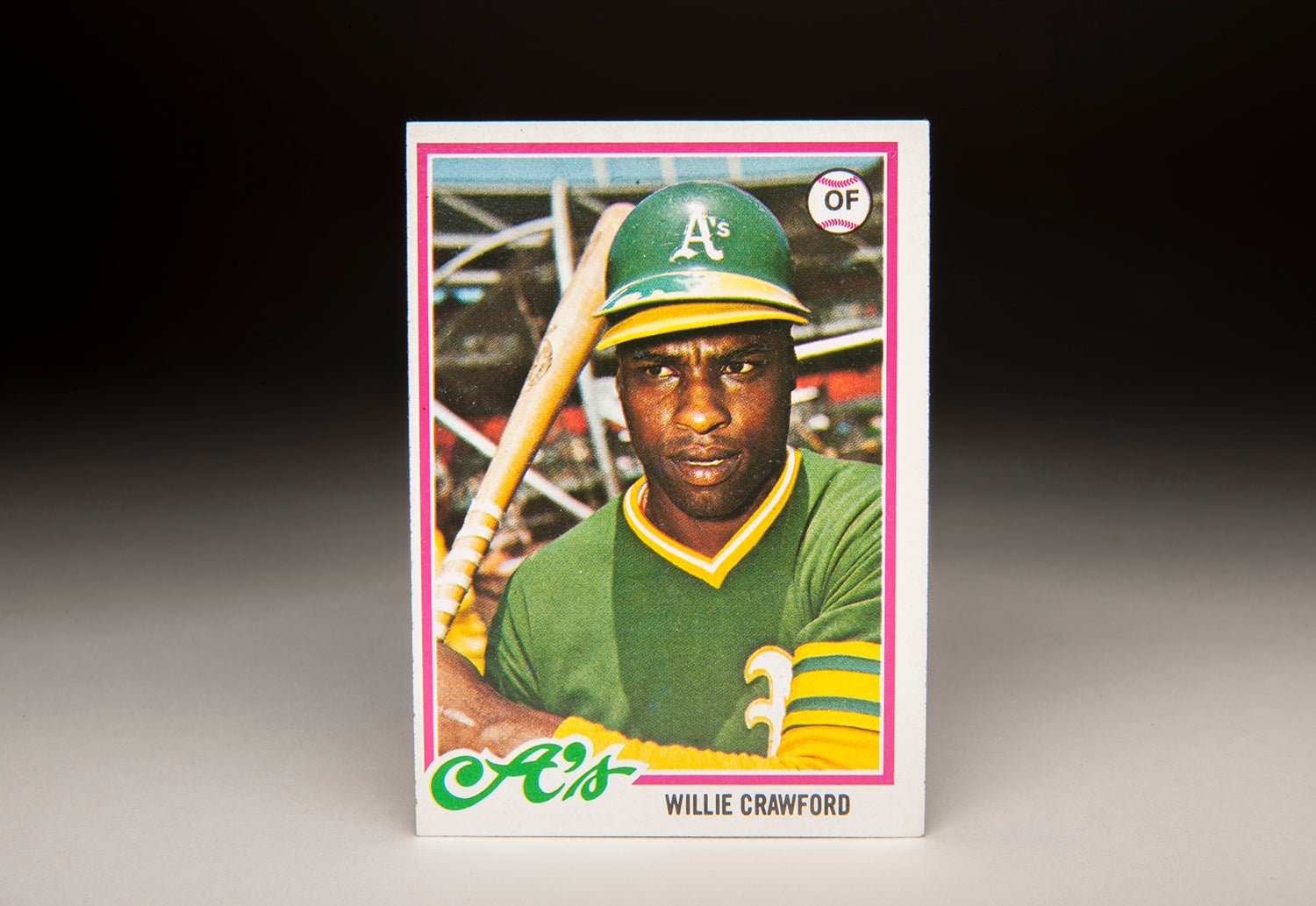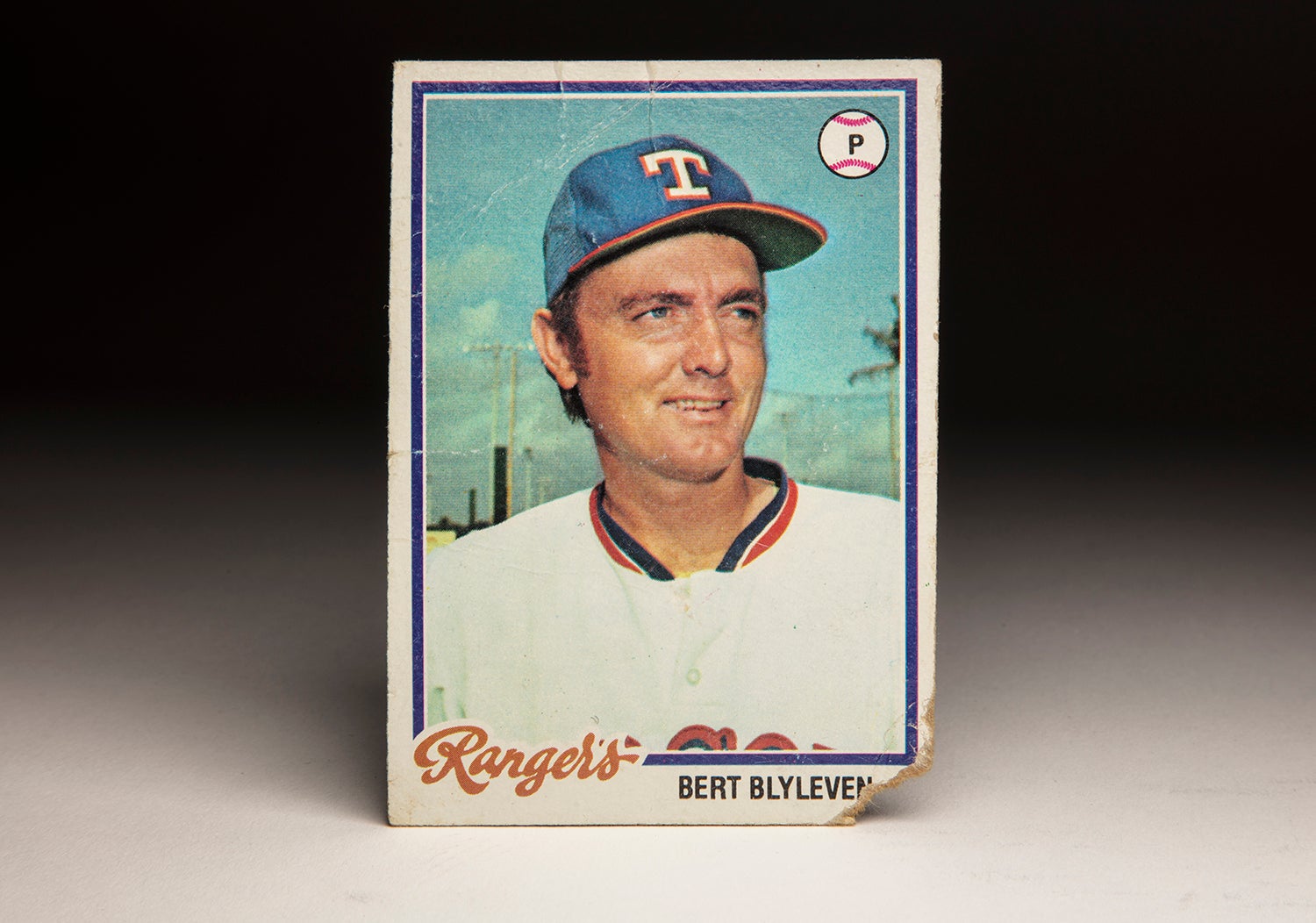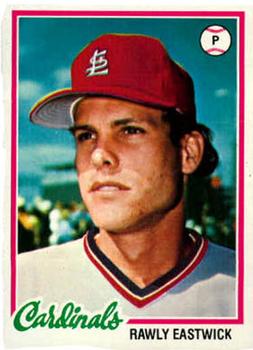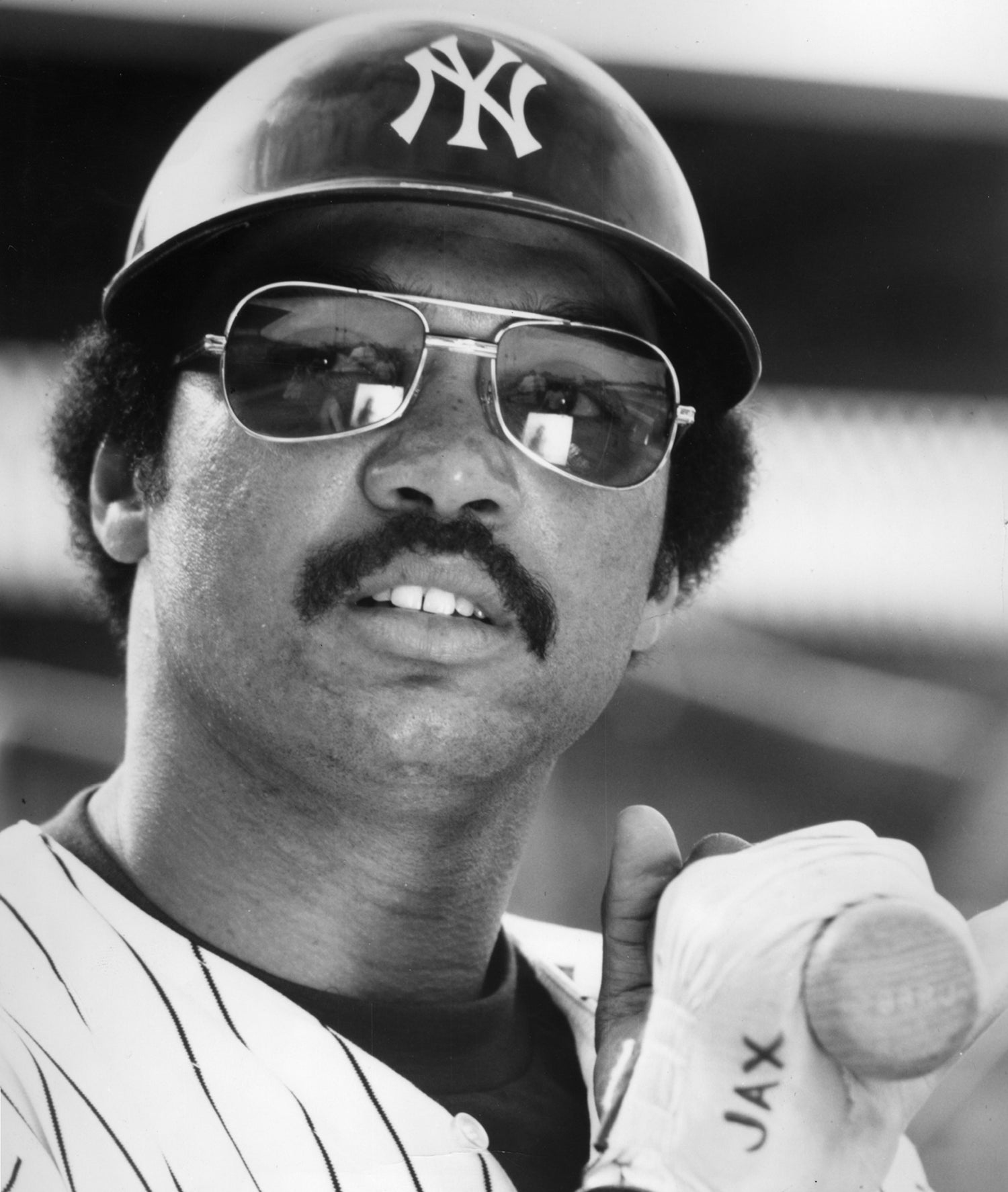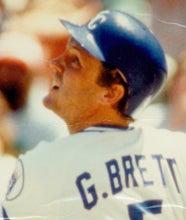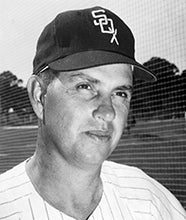- Home
- Our Stories
- #CardCorner: 1978 Topps Record Breaker Sparky Lyle
#CardCorner: 1978 Topps Record Breaker Sparky Lyle
In an era where even the most successful relievers were first and foremost failed starters, Sparky Lyle changed the rules.
And throughout his 16-year big league career, Lyle continued to redefine the value of relief pitchers.
Official Hall of Fame Apparel
Proceeds from online store purchases help support our mission to preserve baseball history. Thank you!
Hall of Fame Membership
There is no simpler, and more essential, way to demonstrate your support than to sign on as a Museum Member.
Lyle’s ’77 Record Breaker’ card was numbered “2” in the Topps 1978 set, with Lou Brock’s ’77 Record Breaker’ card drawing the top spot. Lyle’s card celebrated the pitcher’s new standard of 621 big league games without a start, which was Lyle’s career total following the 1977 season.
Bob Locker previously held the record with 576 games without a starting assignment. Today that mark is held by John Franco, who appeared in 1,119 games in relief.
But in Lyle’s day, it was rare to find a big league pitcher who had been groomed strictly as a reliever. Lyle, however, was indeed a rare breed.
Born July 22, 1944, in Du Bois, Pa., Albert Walter Lyle grew up in nearby Reynoldsville, a coal mining town located about 15 miles from Punxsutawney and its famous groundhog. Lyle played little organized baseball in his teens, but was a good enough athlete to start in football and basketball for his high school team.
While in high school, Lyle began pitching for an American Legion team in Du Bois. With a fastball/curve arsenal, Lyle began racking up strikeouts and caught the attention of a scout for the Baltimore Orioles, who signed him as an amateur free agent on June 17, 1964.
Lyle started out with the Bluefield Orioles of the Appalachian League and earned a promotion to Fox Cities of the Midwest League, finishing the 1964 campaign with a 6-3 record and 95 strikeouts in 68 innings. But the Orioles left Lyle unprotected in the first-year draft, and the Red Sox grabbed Lyle following the season.
Lyle struggled in 1965 with Class A Winston-Salem, posting a 1.598 WHIP and a 4.24 ERA. But in Spring Training of 1966, Lyle came across Ted Williams, who was in camp as a special instructor. Williams advised Lyle – as he did with many young pitchers – that the slider was the best pitch in baseball.
Soon, Lyle was experimenting with the pitch that would one day make him a Cy Young Award winner.
In 1966 at Double-A Pittsfield, Lyle struck out 72 batters in 74 innings, working all but one of his 40 games in relief (his one start resulted in a complete game shutout). Now a top prospect, Lyle was sent to the Florida Instructional League after the season, where he refined his game even further against some of baseball’s best young talent.
He started the 1967 season with Triple-A Toronto, going 2-2 with a 1.71 ERA in 16 games. Then on June 24, the Red Sox sent pitcher Dennis Bennett – who had ruffled new manager Dick Williams in Spring Training – to the Mets in a deal for outfielder Al Yates. That opened a spot in the bullpen for Lyle, who made his big league debut on July 4 against the Angels.
Ten days later, the Red Sox – who had unexpectedly hung around the .500 mark for the first half of the season – caught fire with a 10-game winning streak. Lyle picked up a save in one of those games and pitched regularly throughout July and August as Boston chased the Impossible Dream.
A sore arm sidelined Lyle after Sept. 20, but he finished the season with a 1-2 record and five saves in 27 games, posting a 2.28 ERA while striking out 42 batters in 43.1 innings.
The next season, Lyle firmly established himself in the big leagues, going 6-1 with 11 saves and a 2.74 ERA in 49 games.
He appeared in 71 games in 1969 with an 8-3 record and 17 saves while striking out 93 over 102.2 innings.
He saved 20 games in 1970, but was 1-7 with a 3.88 ERA. Then in 1971, Lyle bounced back to go 6-4 with 16 saves and a 2.75 ERA in 50 games.
But his strikeout numbers plummeted to just 37 in 52.1 innings, and the Red Sox made him available on the trade market that winter.
On March 22, 1972, Boston sent Lyle to the Yankees for a player to be named later – who turned out to be shortstop Mario Guerrero – and first baseman Danny Cater. By the time Guerrero was named and the trade completed on June 30, Lyle was en route to a historic season.
“I’m not happy to go, but I kinda expected it,” Lyle told the Boston Globe on the day of the trade. “I had said that if I got traded – and since I hadn’t worked much I kinda figured I might be – I wanted it to be either Oakland and (manager) Dick Williams or New York and (manager) Ralph Houk.”
Getting his wish, Lyle embarked on a season where he set a new standard for left-handers with 35 saves, going 9-5 with a 1.92 ERA in 59 games. He finished seventh in the American League Cy Young Award voting and third in the AL MVP race while helping keep the Yankees in the AL East race for most of the summer.
Cater, meanwhile, was expected to fill the Red Sox’s void at first base but hit just .237 in 92 games.
In 1973, Lyle was named to his first All-Star Game while saving 27 games. He went 9-3 with a 1.66 ERA and 15 saves in 1974 while playing for manager Bill Virdon, who was not a proponent of the “fireman” role for relievers. Virdon managed the Yankees for the first 104 games of the 1975 season before being replaced by Billy Martin, and Lyle finished that season with a 5-7 record and six saves in 49 games.
Martin, however, returned Lyle to his role of stopper in 1976 – and Lyle finished with an AL-best 23 saves in 64 games as the Yankees won the pennant. After falling in the World Series to the Reds, Yankees owner George Steinbrenner brought several new faces into the clubhouse, including Reggie Jackson.
In a 1977 season that featured nonstop controversy, Lyle was the anchor – going 13-5 with 26 saves and a 2.17 ERA in a league-high 72 games. New York won 100 games en route to the AL East title, but found itself trailing 2-games-to-1 and facing elimination against the Royals in Game 4 of the ALCS. Clinging to a 5-4 lead with two on and two outs in the bottom of the fourth, Martin called on Lyle to face George Brett – and Lyle got Brett to line out to end the frame.
Lyle had pitched 2.1 innings the previous day in Game 3, but Martin rode his closer the rest of the way – and Lyle responded by allowing just two hits and no walks over 5.1 shutout innings to earn the victory. The next day in Game 5, Lyle picked up another win with an inning and a third of shutout relief as the Yankees won the pennant.
Lyle appeared in two games in the World Series against the Dodgers, winning another game as New York captured its first World Series in 15 years. Lyle was named the Cy Young Award winner following the season, becoming the first AL reliever to win the award.
But Steinbrenner was not satisfied with just one World Series title. That winter, he signed Pirates reliever Goose Gossage to a six-year deal worth $2.7 million, creating a logjam in the Yankees’ bullpen and spurring Yankees third baseman Graig Nettles to famously say that Lyle went “from Cy Young to sayonara.”
Lyle turned 34 during the 1978 season and went 9-3 with nine saves in 59 games as the Yankees repeated as World Series champions. But following the season, the Yankees traded Lyle to the Rangers in a 10-player deal that brought – among others – a young Dave Righetti to New York.
Lyle was 5-8 with 13 saves and a 3.13 ERA in 67 games for Texas in 1979, but his performance was overshadowed by the publication of “The Bronx Zoo”, written by Lyle and Peter Golenbock and chronicling the antics of the Yankees’ 1978 season.
Lyle struggled for much of the 1980 campaign, but did briefly hold the all-time saves record when he passed Hoyt Wilhelm with his 228th career save (Wilhelm was thought to have 227 at the time of his retirement but is now credited with 228) on June 4. Rollie Fingers surpassed Lyle a few weeks later.
On Sept. 13, 1980, Lyle was traded to the Phillies in exchange for Kevin Saucier. He saved two games in 10 appearances with the Phils as they secured the NL East title, but was ineligible to appear in the Postseason – where the Phillies won their first-ever World Series title – because the trade came after Aug. 31.
Lyle went 9-6 with two saves in 48 games in the strike-shortened 1981 season, again helping the Phillies reach the Postseason. He finished his career in 1982 with the Phillies and White Sox, ending with a record of 99-76, 238 saves and a 2.88 ERA over 899 games – all in relief.
In 13 Postseason appearances, Lyle was 3-0 with one save and a 1.69 ERA. His 238 saves ranked No. 1 among all lefties at the time of his retirement, and his 232 saves in the AL remain the league record for left-handers.
From 1998-2012, Lyle served as the manager of the Somerset Patriots of the Atlantic League – a team located about 100 miles south of his hometown of Reynoldsville.
But for those who remember the Yankees dynasty of the 1970s, Sparky Lyle’s home will always be the bullpen.
Craig Muder is the director of communications for the National Baseball Hall of Fame and Museum

